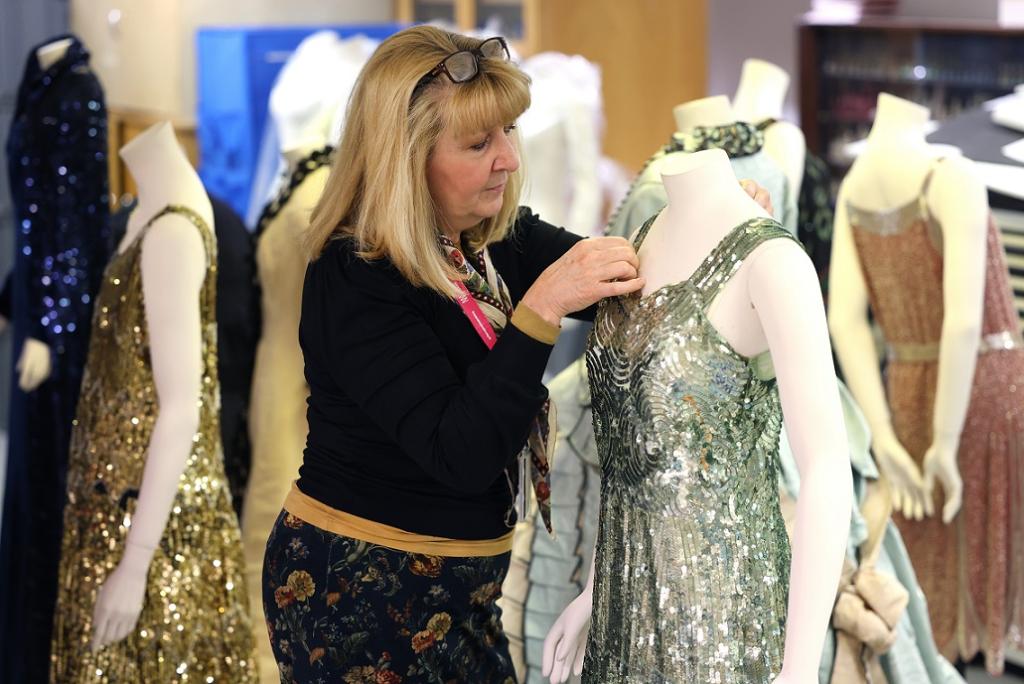Shimmer and Shine: Beaded Evening Dresses, 1920-1940 - press release
Glamorous vintage style on display at Walker Art Gallery

The Walker Art Gallery will showcase 14 dresses from the decades that brought about some of the most glamorous garments ever created. Shimmer and Shine: Beaded Evening Dresses, 1920-1940 (15 April 2022 to autumn 2023) is a free display which will be showcased in the Walker’s Craft and Design Gallery.
Visitors will see some of the beaded and sequined dresses that were incredibly popular in the 1920s and 1930s. Many of them were manufactured in France and exported throughout Europe. Such dazzling creations offered a stark contrast to the practical clothing adopted by women during the First World War.
One sequined evening dress from the 1930s belonged to Mrs Jane Moreton, neé Wilde (1900-1986), daughter of the Chief Officer on the Titanic, Henry Tingle Wilde, who perished with the ship in 1912. Jane married wealthy businessman Henry Stafford Moreton. Her busy social life, linked to Henry’s business, gave her the opportunity to wear such striking and fashionable clothing.
Pauline Rushton, Head of Decorative Arts at National Museums Liverpool, said: “There’s something very special about fashion from the 1920s and 1930s. The optimism and allure of these dazzling new styles captivated women then, and they continue to fascinate us today.
“Women shopped in a very different way at the time. During the 1920s, it was common to purchase sections of dresses, such as a dress front or hemline, covered in beads. These would then have been sewn together by a dressmaker to make a complete dress. We have a wonderful example of a beautifully elaborate dress front in the display.”
A sequined cape, made in France, also features. It’s original owner, Elsie Rowe, wore the cape to dine in Manchester’s Midland Hotel during the 1930s. Built in 1903 by the Midland Railway, the hotel is one of the city’s grandest buildings, and the restaurant is still known for its fine dining today.
Before the War, dress styles constricted the female body. Many complicated layers were worn over corsets, moulding the waistline, bosom and hips into an ‘hourglass’ silhouette. From the early 1920s onwards, fashions changed dramatically. A long, tubular shape, with flattened breasts and narrow hips, became the desired look.
Hemlines gradually rose to knee-length by the mid-1920s, before falling back to the ankles again by the end of the decade. The evening dresses made in this style, with simplified shapes and flat surfaces, were ideal for decorating with applied glass beads and sequins.
The styles reflected the exciting changes taking place in society itself. Women were experiencing increased freedom, partly through such relaxed clothing. They enjoyed energetic new dances like the Charleston, drank cocktails and smoked in public for the first time.
The weight of the beads and sequins on these evening dresses added a sense of movement as women danced. Light reflected off them, causing them to shimmer and shine. The glamorous fashions that emerged from these decades represent some of the most iconic and treasured styles of the last century.
liverpoolmuseums.org.uk/shimmer-and-shine
- ENDS -
FURTHER INFORMATION
Felicity Robinson
PR & Communications Officer
felicity.robinson@liverpoolmuseums.org.uk
